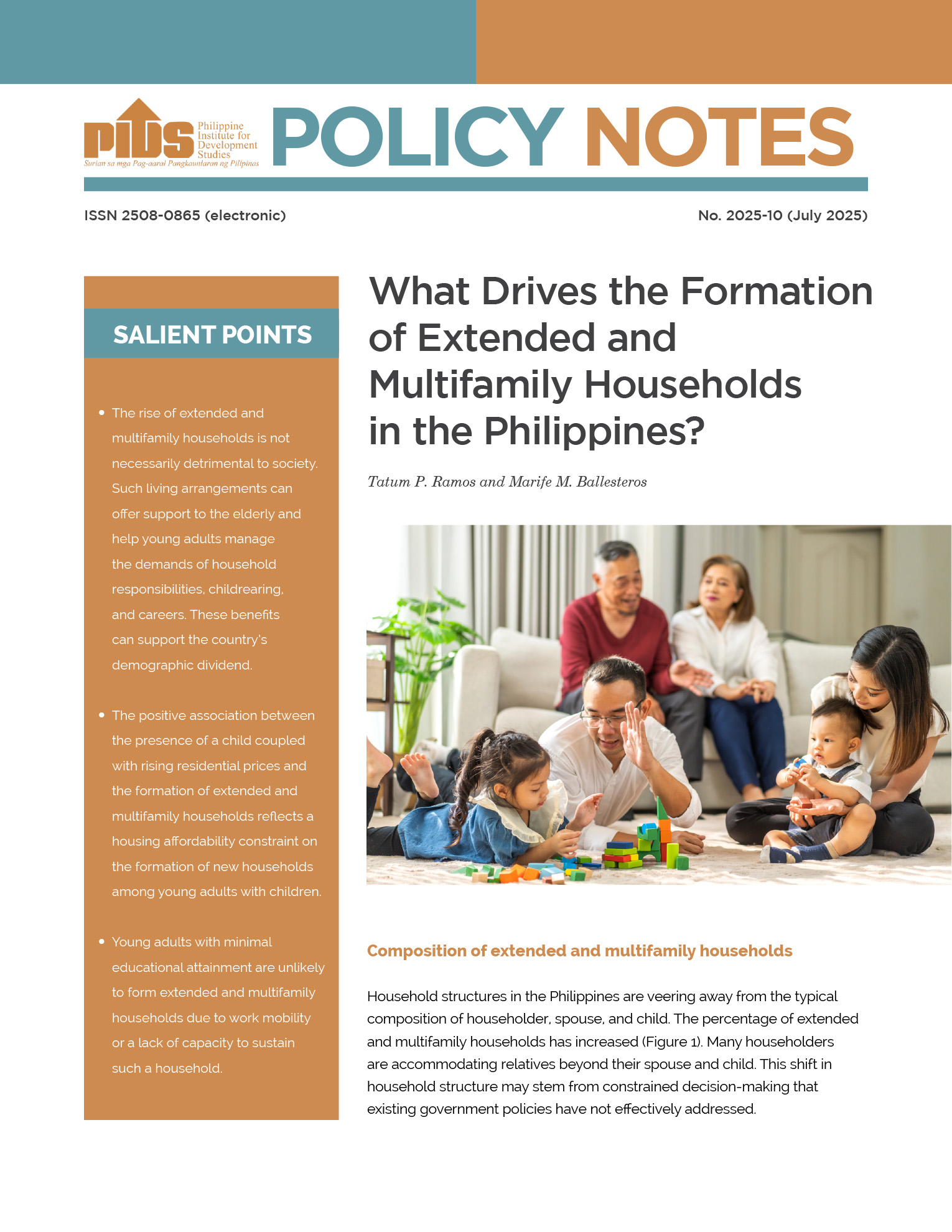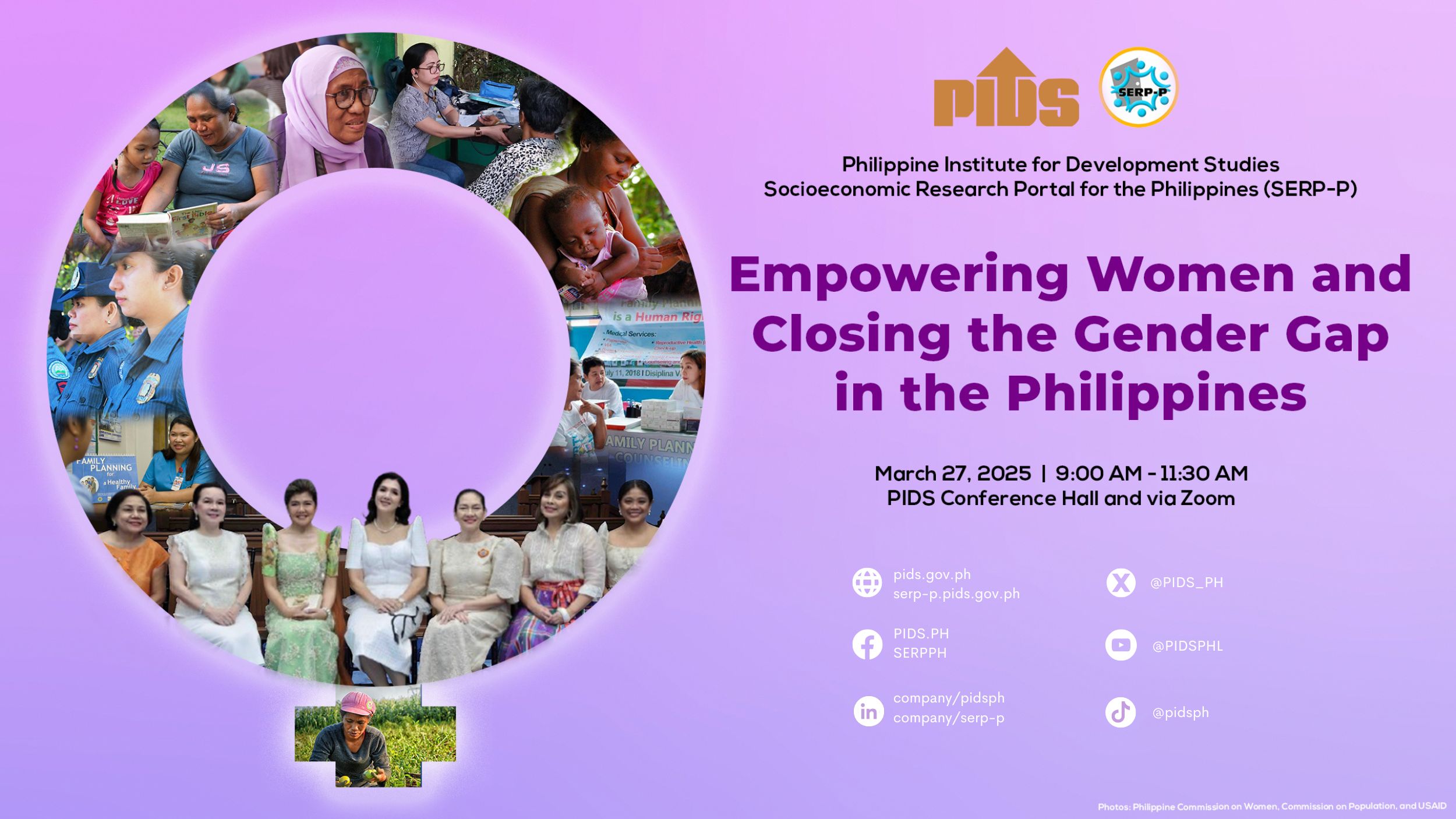
A plethora of risks can potentially dismantle a country’s vision of sustained and inclusive growth. With overlapping risks of varied nature, the need to build multiple resilient communities has become a top priority, particularly for the Philippines—a country battered by shocks related to extreme weather events, high structural unemployment and underemployment, increasing food prices, and corruption, among others. It is no surprise, then, that state think tank Philippine Institute for Development Studies (PIDS) and its partner-institutions center the celebration of the 14th Development Policy Research Month (DPRM) on “Investing in Risk Reduction for a Resilient Philippines”.
Although it became a buzzword only in the last decade, the term “resilience” originated in the 1970s in the field of ecology to refer to the ability of an ecosystem to absorb change and disturbance. Traditionally, resilience is associated with natural hazards, extreme weather events, or disasters. However, according to PIDS President Gilberto Llanto, building resilience should go beyond disaster risk reduction and management, as the Philippines has never confronted risks as interconnected and varied as they are today.
The risk landscape has evolved into a web of various threat sources, which is made complex by overlapping economic, environmental, societal, geopolitical, and technological risks. Recognizing the fact that risks are intricately linked to one another—and that its effects can easily cascade across and among individuals, economies, and nations—is the first step toward building resilience.
Hence, this year’s celebration of the DPRM aims to encourage the country’s leaders and the general public to appreciate the role and importance of evidence-based policies, programs, and projects in building the country’s resilience to multiple risks. Appropriate interventions that help build absorptive, adaptive, and transformative capacities are vital. These capacities are needed to enable a community to respond to risks and shocks that cripple development gains, raise poverty incidence, and impede public services, among others. Higher absorptive and adaptive capacities to manage risks result in a transformed system that is more dynamic and responsive to change.
The theme chapter of the 2015–2016 Economic Policy Monitor (EPM), an annual publication of PIDS, explains further the relevance of this year’s DPRM theme. On this chapter, Llanto underscores the urgent need to view resilience in its totality. However, given the Philippines’ high exposure and vulnerability to risks, Llanto admits that building resilience is a herculean task. This is where evidence-based policy research and analyses are needed to inform policymakers’ decisions and help them have a good understanding of resilience thinking, risk analysis, and risk management. Likewise, the EPM and the DPRM celebration aim to engage other stakeholders in building resilient systems. Resilience building, therefore, should be a collective effort among policymakers and the academic/research, business, and civil society sectors.
Know what other PIDS studies have to say about resilience building. Visit the SocioEconomic Research Portal for the Philippines. Simply type “risk reduction”, “resilience”, and other related keywords in the Search box.
- Building Philippine SMEs Resilience to Natural Disasters
- The 2008 Global Financial and Economic Crisis: Impact on the Philippines and Policy Responses at the National and Regional Levels
- The Impact of the Global Financial Crisis on Poverty in the Philippines
- Community Governance for Disaster Recovery and Resilience: Four Case Studies in the Philippines
- Deepening Regional Cooperation for Disaster Recovery and Reconstruction: A Proposal for Proactive Approach to Risk Financing
- Rice Prices and the National Food Authority
- Impact of the Global Financial and Economic Crisis on the Philippines
- The Impact of the Global Financial Crisis on Rural and Microfinance in Asia
- Lessons for the Philippines from the US Financial Crisis
- Forecasting Natural Hazards and Disasters in Selected Southeast Asian Countries: The Need for Cooperative Action
- Communicating and Using Seasonal Climate Forecasts: a Challenge Crossing National, Organizational, and Disciplinary Boundaries
- Crop Insurance: Security for Farmers and Agricultural Stakeholders in the Face of Seasonal Climate Variability












